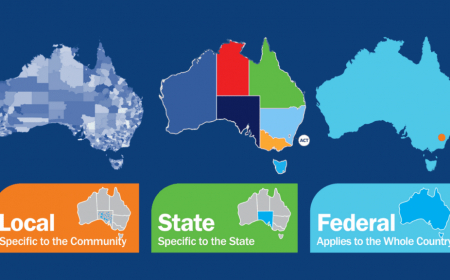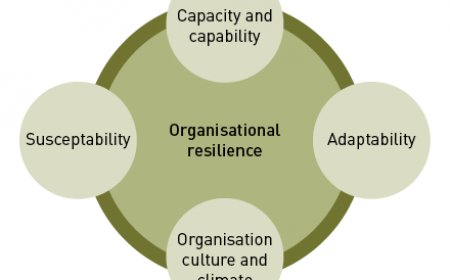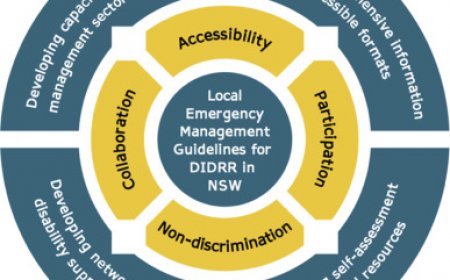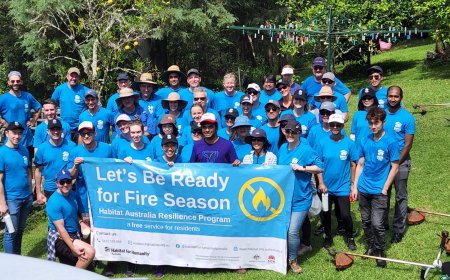Travel & Tourism: Digital Nomads and Remote Work Destinations
Discover the top remote work destinations for digital nomads, offering affordable living, vibrant communities, and unparalleled cultural experiences. Explore coworking spaces, cost-effective accommodations, and tips for thriving as a remote worker abroad.
The rise of digital nomadism has revolutionized the way people approach work and travel. Enabled by advancements in technology, remote work has transitioned from a niche trend to a mainstream lifestyle choice. This shift has been further accelerated by global events, such as the COVID-19 pandemic, which forced companies and employees to adopt flexible working arrangements. As a result, millions of professionals now have the freedom to live and work from virtually anywhere in the world.
For digital nomads , the appeal lies in the ability to blend productivity with exploration. Instead of being tethered to a single location, they can immerse themselves in diverse cultures, experience new environments, and build a life that prioritizes both career growth and personal fulfillment. This movement has given birth to a thriving ecosystem of remote work destinations , where infrastructure, affordability, and quality of life converge to create ideal settings for location-independent workers.
Governments and businesses worldwide are recognizing the economic potential of attracting digital nomads. Many countries have introduced digital nomad visas , offering long-term residency permits tailored to remote workers. These initiatives not only stimulate local economies but also foster cross-cultural exchange and innovation. As we delve deeper into this topic, we will uncover some of the most sought-after destinations for digital nomads, highlighting their unique advantages and what makes them stand out in the global landscape.
Why Choose Remote Work Destinations?
The decision to embrace a remote work lifestyle is driven by a combination of practical benefits and aspirational goals. For many digital nomads, the allure lies in escaping the monotony of traditional office environments and embracing a more dynamic way of living. By choosing remote work destinations , individuals gain access to a wealth of opportunities that enhance both their professional and personal lives.
One of the primary draws of these destinations is the promise of work-life balance . Unlike conventional jobs that often demand rigid schedules and fixed locations, remote work allows individuals to design their days around their preferences. Whether it’s starting the morning with yoga on a tropical beach or taking breaks to explore historic landmarks, digital nomads can tailor their routines to suit their lifestyles. This flexibility fosters creativity, reduces stress, and promotes overall well-being.
Another compelling reason to choose remote work destinations is the opportunity to save money while enjoying a higher standard of living. Many popular hubs for digital nomads, such as Bali, Lisbon, and Medellín, offer affordable accommodation, coworking spaces, and dining options without compromising on quality. This cost-effectiveness enables remote workers to stretch their budgets further, allowing them to invest in experiences like travel, education, or entrepreneurship.
Beyond financial considerations, remote work destinations provide access to vibrant communities of like-minded individuals. Coworking spaces and networking events serve as hubs for collaboration, mentorship, and friendship. These connections not only combat feelings of isolation but also open doors to new opportunities, whether it’s landing freelance gigs, launching startups, or finding creative inspiration.
Finally, the cultural enrichment offered by remote work destinations cannot be overstated. Living abroad exposes digital nomads to different perspectives, traditions, and ways of life. From learning new languages to participating in local festivals, these experiences broaden horizons and cultivate empathy. For those seeking adventure and growth, remote work destinations represent a gateway to a more fulfilling existence.
Top Remote Work Destinations Around the World
Bali, Indonesia: A Tropical Paradise for Digital Nomads
Few places capture the imagination of digital nomads quite like Bali , an island renowned for its lush landscapes, spiritual ambiance, and thriving expat community. Nestled in Southeast Asia, Bali offers a unique blend of affordability, connectivity, and natural beauty, making it a perennial favorite among remote workers.
At the heart of Bali’s appeal are its world-class coworking spaces , such as Hubud , Outpost Ubud , and Dojo Bali . These venues cater specifically to digital nomads, providing high-speed internet, ergonomic workstations, and communal areas designed to foster productivity and collaboration. Many coworking spaces also host workshops, networking events, and wellness activities, ensuring a holistic approach to remote work.
Accommodation options in Bali range from budget-friendly guesthouses to luxury villas, all set against breathtaking backdrops. Ubud, known as the cultural capital of Bali, is particularly popular among digital nomads who value tranquility and inspiration. Here, you can wake up to the sound of birdsong, spend your mornings working amidst rice paddies, and unwind with sunset yoga sessions overlooking volcanic peaks.
Practical Tips for Working in Bali
- Visa Requirements: Apply for a Social-Cultural Visa or Business Visa, depending on the length of your stay.
- Cost of Living: Monthly expenses typically range from $800–$1,500 USD, including rent, food, and coworking memberships.
- Connectivity: Invest in a local SIM card (e.g., Telkomsel or XL Axiata) for reliable mobile data.
Lisbon, Portugal: Europe’s Tech Hub with Old-World Charm
As one of Europe’s fastest-growing tech hubs, Lisbon has become a magnet for digital nomads seeking a cosmopolitan yet affordable lifestyle. The city’s sunny climate, rich history, and welcoming locals make it an attractive destination for remote workers from around the globe.
Lisbon boasts an impressive array of coworking spaces , including Second Home Lisboa , Unplugged , and Impact Hub Lisbon . These facilities combine modern amenities with stylish interiors, creating environments conducive to focus and creativity. Additionally, Lisbon’s startup ecosystem is booming, with numerous accelerators, incubators, and networking events catering to entrepreneurs and freelancers.
Beyond work, Lisbon offers endless opportunities for exploration. Wander through the narrow streets of Alfama, savor fresh seafood at Mercado da Ribeira, or catch a tram ride to Belém Tower. The city’s proximity to stunning beaches and picturesque towns like Sintra adds another layer of allure for digital nomads looking to balance work with leisure.
Historical Context: Lisbon’s Renaissance
Lisbon’s resurgence as a global hotspot dates back to Expo ’98, a world exposition that revitalized the city’s waterfront and infrastructure. Since then, strategic investments in technology, education, and tourism have positioned Lisbon as a leader in innovation and sustainability.
Practical Tips for Working in Lisbon
- Transportation: Purchase a Viva Viagem card for seamless access to buses, trams, and metros.
- Language: While English is widely spoken, learning basic Portuguese phrases enhances interactions.
- Best Time to Visit: Spring (March–May) and fall (September–November) offer mild weather and fewer crowds.
Medellín, Colombia: A City Reborn
Once infamous for its turbulent past, Medellín has undergone a remarkable transformation, emerging as one of Latin America’s most innovative cities. Known as the “City of Eternal Spring” due to its pleasant year-round climate, Medellín combines affordability, safety, and cutting-edge infrastructure to attract digital nomads.
The city’s coworking scene is thriving, with standout venues like Selina , Atom House , and Wok Station offering state-of-the-art facilities and vibrant atmospheres. Many of these spaces double as social hubs, hosting events that connect remote workers with local entrepreneurs and creatives.
Medellín’s cost of living is remarkably low compared to other major cities, allowing digital nomads to enjoy a comfortable lifestyle without breaking the bank. Rent for a one-bedroom apartment in the trendy El Poblado neighborhood averages $400–$600 USD per month, while meals at local eateries cost as little as $3–$5 USD.
Culturally, Medellín is a treasure trove of art, music, and gastronomy. Visit Parque Arví for eco-tourism adventures, explore Botero Plaza to admire Fernando Botero’s iconic sculptures, or attend Feria de las Flores, an annual festival celebrating the region’s floral heritage.
Personal Anecdote: Falling in Love with Medellín
During my time in Medellín, I was struck by the warmth and resilience of its people. One evening, I attended a salsa class at Euforia Dance Academy, where I met fellow digital nomads and locals eager to share their passion for dance. That night, surrounded by laughter and rhythm, I realized why so many choose to call Medellín home.
Practical Tips for Working in Medellín
- Safety: Stick to well-lit areas and avoid displaying expensive gadgets in public.
- Currency: Use Colombian Pesos (COP); ATMs are widely available throughout the city.
- Healthcare: Consider purchasing international health insurance, as public healthcare may not meet all needs.
Chiang Mai, Thailand: Affordable Serenity in Southeast Asia
Nestled in northern Thailand, Chiang Mai embodies the perfect harmony of affordability, culture, and convenience. Often referred to as the “Digital Nomad Capital of Asia,” this ancient city attracts remote workers with its laid-back vibe, low cost of living, and robust infrastructure.
Chiang Mai’s coworking spaces , such as Punspace , Haven , and Yellow , are legendary among digital nomads. These venues offer everything from quiet pods for deep work to communal tables for brainstorming sessions. Regular meetups and networking events help newcomers integrate quickly into the community.
Living in Chiang Mai is incredibly economical. A modest apartment in the Old City costs between $200–$400 USD per month, while street food stalls serve delicious meals for under $2 USD. Despite its affordability, the city doesn’t skimp on quality—luxury spas, boutique cafes, and upscale restaurants abound.
Culturally, Chiang Mai is steeped in tradition. Explore centuries-old temples like Wat Phra That Doi Suthep, participate in Loy Krathong lantern festivals, or take cooking classes to master authentic Thai cuisine. Weekend markets like Nimmanhaemin Road showcase handmade crafts and artisanal goods, providing ample opportunities for souvenir shopping.
Practical Tips for Working in Chiang Mai
- Internet Reliability: Opt for fiber-optic connections if possible; otherwise, rely on coworking spaces for stable Wi-Fi.
- Climate: Expect cooler temperatures during November–February and hotter, humid conditions from March–May.
- Etiquette: Dress modestly when visiting temples and remove shoes before entering homes or sacred sites.
Tbilisi, Georgia: Hidden Gem of the Caucasus
Located at the crossroads of Europe and Asia, Tbilisi is rapidly gaining recognition as a hidden gem for digital nomads. This culturally rich city blends Soviet-era architecture with modern developments, offering a unique backdrop for remote work.
Tbilisi’s coworking spaces , such as Impact Hub Tbilisi and Workland , provide excellent facilities at competitive prices. Free Wi-Fi is ubiquitous in cafes and public areas, ensuring seamless connectivity for those who prefer working remotely. Moreover, Georgia’s government recently launched a Remotely from Georgia program, granting digital nomads extended stays of up to one year.
The cost of living in Tbilisi is exceptionally low. A monthly budget of $700–$1,000 USD covers rent, utilities, groceries, and entertainment. Local delicacies like khinkali (dumplings) and khachapuri (cheese bread) are not only affordable but also irresistibly flavorful.
Culturally, Tbilisi is a feast for the senses. Stroll through the cobbled streets of Old Town, soak in sulfur baths at Abanotubani, or hike to Narikala Fortress for panoramic views of the city. Wine enthusiasts will appreciate Georgia’s status as the birthplace of viticulture, with countless wineries offering tastings and tours.
Historical Context: Tbilisi’s Strategic Importance
Founded in the 5th century AD, Tbilisi has long served as a melting pot of cultures due to its strategic location along the Silk Road. This diversity is reflected in its architecture, cuisine, and hospitality, making it a fascinating destination for history buffs.
Practical Tips for Working in Tbilisi
- Language Barrier: While Georgian is the official language, younger generations and service staff often speak English.
- Transportation: Use marshrutkas (minibuses) or ride-hailing apps like Bolt for affordable travel.
- Local Customs: Toasting rituals are integral to Georgian culture; always accept drinks graciously during gatherings.
Best Nearby Attractions
When planning your stay in these remote work destinations, consider exploring nearby attractions that enhance your overall experience. For example, in Bali , take a day trip to Ubud’s Monkey Forest or hike Mount Batur for a sunrise trek. In Lisbon , venture to Sintra’s fairy-tale palaces or surf the waves at Cascais Beach. Similarly, in Medellín , visit Guatapé’s colorful town and iconic rock formation, El Peñol, or explore the lush Cocora Valley near Chiang Mai in Thailand.
In Tbilisi , don’t miss the opportunity to visit Kazbegi and its stunning Gergeti Trinity Church, perched against the Caucasus Mountains. Each region has its unique charm, offering opportunities to delve deeper into cultural heritage, natural wonders, and adventure activities.
Best Nearby Restaurants
Pair your remote work lifestyle with meals at acclaimed restaurants specializing in local cuisine. Local chefs expertly curate dishes that highlight seasonal ingredients, complementing the vibrant flavors of each destination.
For instance, in Chiang Mai , dine at Dash! Restaurant & Bar , renowned for its fusion of Thai and Western flavors. In Lisbon , indulge in contemporary Portuguese fare at Belcanto , helmed by Michelin-starred chef José Avillez. If you’re in Medellín , savor bandeja paisa (a hearty traditional dish) at Carmen or enjoy gourmet burgers at Village Burger .
In Bali , Locavore stands out for its innovative tasting menus featuring locally sourced ingredients, while in Tbilisi , Shavi Lomi delights diners with authentic Georgian dishes served in a cozy, rustic setting. These culinary destinations not only elevate your gastronomic experience but also deepen your connection to the region’s culture and traditions.
Weather
Understanding the weather patterns of your chosen destination ensures optimal timing for your trip. Mild climates prevail in many remote work destinations, though specific conditions vary based on geography and seasonality.
In Bali , expect warm temperatures year-round, with rainy seasons from November to March. Lisbon enjoys a Mediterranean climate, with mild winters and hot summers. Autumn (September–November) is particularly magical here, as vineyards turn golden during harvest season. In contrast, Medellín experiences a consistent “eternal spring” climate, with temperatures averaging 72°F (22°C).
For cooler climates, Chiang Mai offers temperate winters (November–February), making it ideal for outdoor exploration, while summers (March–May) can be hot and humid. Tbilisi experiences four distinct seasons, with snowy winters and pleasant springs, perfect for hiking and sightseeing. Always check the forecast before traveling and pack accordingly to ensure comfort during your stay.
Accessibility
Most remote work destinations prioritize accessibility, catering to international travelers via well-connected airports and transportation networks. Detailed planning ensures seamless navigation during your stay.
In Bali , Ngurah Rai International Airport serves as the gateway, with shuttle services and rental scooters readily available. Similarly, Lisbon benefits from Lisbon Portela Airport, offering direct flights from major European cities. For remote regions like Chiang Mai , Chiang Mai International Airport provides convenient access, with scenic drives leading to coworking hubs.
If you prefer guided tours, many regions offer organized excursions that include transportation, accommodations, and meals. This option is especially useful for those unfamiliar with local roads or seeking a hassle-free experience. Always book accommodations and coworking spaces in advance, especially during peak seasons, to avoid last-minute stress.
How to Make the Most of Your Remote Work Experience
To make the most of your remote work journey, research ahead of time, book accommodations early, and tailor your itinerary to suit your interests. Engage with local communities and embrace spontaneity for unexpected discoveries.
Start by identifying what you hope to gain from your stay—whether it’s learning about new cultures, sampling rare cuisines, or simply enjoying picturesque landscapes. Many destinations offer specialized experiences, such as cooking classes, language lessons, or guided hikes that allow you to immerse yourself fully in the local environment.
Don’t hesitate to ask questions during networking events; locals and fellow digital nomads love sharing their knowledge. Keep a journal to document your favorite experiences and notes about cultural insights, which can help refine your understanding over time. Lastly, respect the environment by adhering to sustainable practices, such as reducing plastic use and supporting eco-friendly businesses.
Conclusion
Exploring the best remote work destinations promises an unforgettable odyssey filled with discovery, growth, and inspiration. From the sun-drenched beaches of Bali to the historic streets of Tbilisi, each location offers a unique window into the world of digital nomadism. Whether you’re a seasoned remote worker or a curious beginner, these destinations provide endless opportunities to deepen your appreciation for diverse cultures and lifestyles.
Let this guide serve as your roadmap to crafting a truly memorable adventure. By combining meticulous planning with an open mind, you’ll uncover hidden gems, forge meaningful connections, and create lasting memories. Cheers to embarking on a journey that celebrates the freedom and flexibility of remote work!
10 FAQ’s with Answers
-
What is a digital nomad?
- A digital nomad is someone who works remotely while traveling, often leveraging technology to perform their job from various locations worldwide.
-
Do I need a visa to work remotely in another country?
- Visa requirements vary by country; some nations offer digital nomad visas specifically designed for remote workers.
-
How do I find affordable accommodation as a digital nomad?
- Use platforms like Airbnb, Booking.com, or local Facebook groups to find budget-friendly options tailored to long-term stays.
-
Are coworking spaces necessary for remote work?
- While not mandatory, coworking spaces provide structure, community, and reliable internet, enhancing productivity.
-
Can I work remotely without speaking the local language?
- Yes, many popular remote work destinations have English-speaking communities and resources, though learning basic phrases is always beneficial.
-
What are the best tools for remote work?
- Essential tools include Slack, Zoom, Trello, Google Workspace, and project management software like Asana or Monday.com.
-
How do I manage taxes as a digital nomad?
- Consult a tax professional familiar with international taxation to ensure compliance with both your home country and host country regulations.
-
Is health insurance important for digital nomads?
- Absolutely! Health insurance protects you from unexpected medical expenses and ensures access to quality care abroad.
-
What should I pack as a digital nomad?
- Essentials include a laptop, noise-canceling headphones, portable charger, universal adapter, and lightweight clothing suitable for the climate.
-
How do I stay motivated while working remotely?
- Establish a routine, set clear goals, take regular breaks, and engage with local communities to maintain motivation and avoid burnout.
What's Your Reaction?
 Like
0
Like
0
 Dislike
0
Dislike
0
 Love
0
Love
0
 Funny
0
Funny
0
 Angry
0
Angry
0
 Sad
0
Sad
0
 Wow
0
Wow
0











































